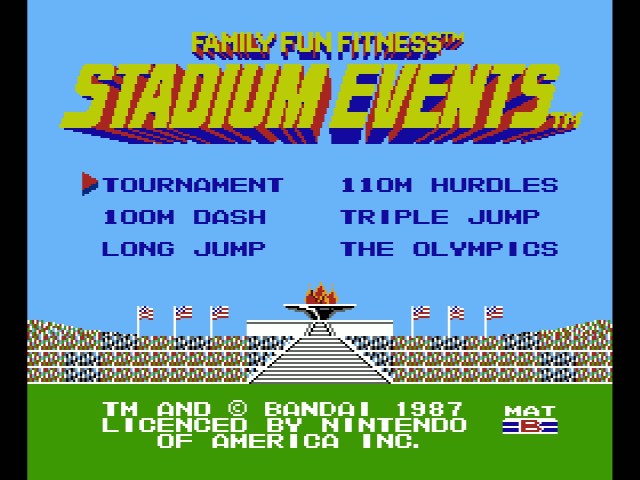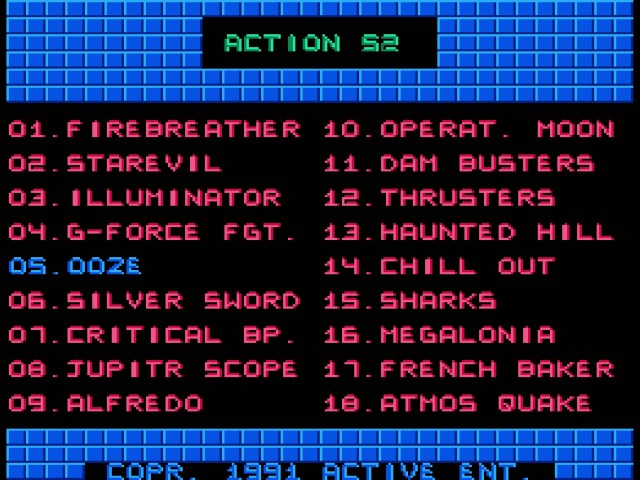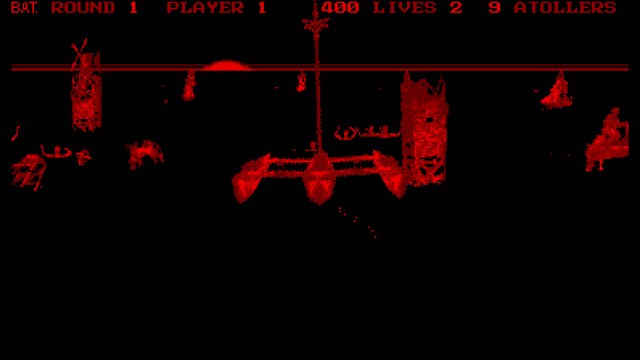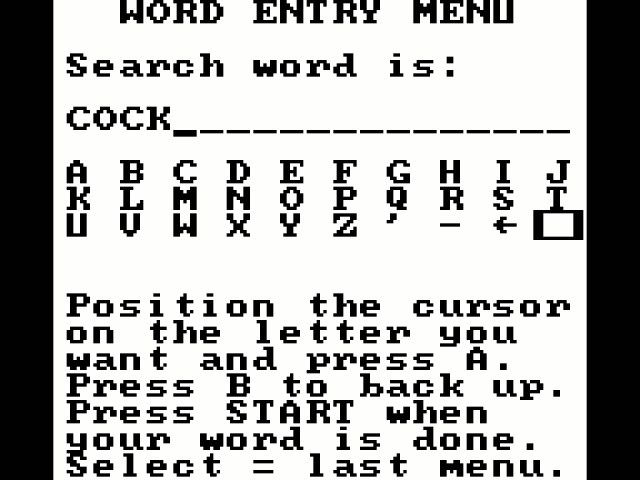A scarce commodity
Do you own a jar of my toenail clippings? Not many people do. They’re a scarce commodity, but scarcity is a daft reason to own anything. It’s hardwired into our brain that if there are few of something, we want it more. We know it as the “fear of missing out,” and it’s one of the most annoying subsets of greed.
Video game collecting is a pretty innocuous embodiment of this. To my knowledge, no wars have been fought over a copy of Snatcher on the Sega CD. However, it’s still rather annoying. I collect games because they are a tangible representation of the game. I like to play them. Don’t give me a factory-sealed game, because I will open it. I don’t want to look down on anyone else’s reasoning for why they collect games, but I can’t help but find it ridiculous that some questionable titles maintain a high value based on scarcity. As I said previously, scarcity is a pox on humanity’s ass, and here’s a closer look at some of the festering boils.

Family Fun Stadium Events (1987, NES)
Family Fun Stadium Events really grills my goat. It’s considered one of the “holy grails” of the NES library. Bandai was the original creator of the Power Pad, and they were all set to release the NES version alongside Family Fun Stadium Events when Nintendo stepped in to re-brand and distribute it instead. All copies of Stadium Events that did make it to shelves were pulled.
There’s a few things I hate about this. First, Nintendo re-released the game as the more commonly known World Class Track Meet, and the two games are identical aside from the title screen. Secondly, the number of cartridges in the wild is based entirely on speculation. Some say that only a handful of them made it to consumers, but the minimum production run of an NES game is 10,000. Former Nintendo Spokesperson, Howard Phillips, doesn’t think it’s likely they were destroyed, so they could still be out there. Personally, I’m not going to drop $20k on a different title screen in the first place. But the only way that could be worse is if someone discovered a long-forgotten skid of cartridges that crater the price.
Barbie Groom and Glam Pups (2013, 3DS)
Dogs are pretty great, make no mistake. I prefer to give them scritchins and snuggle with them rather than glam them up. I also have nothing against Barbie. She doesn’t come with a proton pack or transform into anything, but I guess some kids have more imagination. However, I can’t fathom a reason why I’d ever want to spend upwards of $2000 on something like this. $2000 could get you a pretty great dog, but you can also get their boundless affection and gratitude for much cheaper if you adopt.
The reason Barbie: Groom and Glam Pups is so expensive is that the only NTSC version of it was released at limited locations in some obscure country called Canada. I guess if you really need to complete your 3DS collection, you have no choice, but if you’d rather just play the game, get the Wii or DS versions for under $10.

Action 52 (1991, NES)
I’m almost embarrassed to say that I own a copy of Action 52 on the NES, but at around $300, it’s the lower-priced items on this list. Inspired by pirate cartridges, Action 52 is a sound idea on paper. 52 games, all in one cartridge, for the low (?) entry fee of $200. But while pirate cartridges (usually) just consist of a bunch of already-released games, all 52 games on this cartridge are completely new. Unfortunately, the three (or maybe four) college students enlisted to develop the games were given three months to complete all 52 of them.
The result is a collection of games that aren’t even passable at their best and literally unplayable at their worst. There’s nothing worth playing in the lot. Its price is held aloft by the fact that there aren’t many in circulation, and it’s notorious as one of the worst games ever. You don’t have to play it yourself; I can confirm it’s not good.
Eli’s Ladder (1982, Atari 2600)
Sometimes considered to be the rarest educational game in existence, Eli’s Ladder is known for its scarcity. Now, I won’t begrudge someone for wanting to learn math on an Atari 2600. Video games are a great way to trick children into learning something boring. However, Eli’s Ladder is an extremely basic example of this, and because there are so few in circulation, the last time one was sold on eBay, it went for $5000. If someone offered me $5000, I promise I would learn arithmetic so damned hard without the need for an Atari 2600.

Waterworld (1995, Virtual Boy)
This is another game that I actually own, but that’s only because it wasn’t as expensive at the time, and I needed it to complete my collection of North American Virtual Boy games. Waterworld is based on the 1995 post-apocalyptic film. While there were other games based on the movie, Waterworld on Virtual Boy is its own distinct thing, which isn’t much. A lot of Virtual Boy games had the problem where they felt more like tech demos or old arcade games rather than complete experiences. Waterworld is like that. You sail around, blowing up other boats and rescuing people. It takes about a minute to see everything that Waterworld has to offer, then it just repeats that but harder.
Bronkie the Bronchiasaurus (1994, SNES)
I almost didn’t include Bronkie the Bronchiasaurus because I definitely want to play it. However, I deliberately play bad games, so I’m a very poor metric. Bronkie the Bronchiasaurus is an edutainment sidescroller from Raya Systems, who also brought us Captain Novolin, Rex Ronan: Experimental Surgeon, and Packy and Marlon. It’s about the titular Bronciasaurus who has to both platform and manage their asthma. While I’m a broken enough person to find that to be a tantalizing premise, I’m not sure I’m willing to spend upwards of $300 to find out if it reaches its ambitions.

King James Bible (1994, Game Boy)
I’m not trying to say the King James Bible isn’t a worthwhile read. I’m sure it’s… neat. However, the Game Boy sounds like the worst imaginable e-reader. The system is known for its great library of games and a battery life longer the 8 seconds. It isn’t known for having a fantastic screen. Truly, its screen could be best described as “visible,” at least while there’s sufficient light but not too much light. The idea of reading an entire book on there, let alone the Bible, sounds like a pretty depressing way to spend a road trip. There are two games on there, and a word search in case you’re curious about how many times the word “cock” comes up in the Bible.
Actually, that is something I’m curious about. According to my research, it’s somewhere between 7 and 13 times. King James Bible says none, so what’s even the point?
Neurodancer (1994, 3DO)
I know I said these are games that you don’t want to play, but I can conceive of reasons why you’d want to play old pornographic games. Not because they’re worthwhile additions to the sin bin. It’s easier than ever to taste every flavor of porn possible while you’re riding the bus or at your child’s piano recital, and adding a game to it is just a needless obstacle that gets in the way of nipples. No, I would play pornographic games because they’re so bad; they’re kitsch.
Pornographic FMV games are in their own category of bad, and Neurodancer for the 3DO Interactive Multiplayer is the perfect example of a title that gets in the way of its own concept. Not only is it so mild that my extensive research has not uncovered the existence of actual tits within it, but a high percentage of it is actually videos of people goofing around in front of cameras, spoofing the cyberpunk future like something out of Robocop. That doesn’t do much for me in terms of arousal, but worse are the mazes that you have to go through to gain credits that you use to get women to take their clothes. Listen, I don’t know how much you know about seduction, but mazes are a pretty unconventional approach.
Try match-3 instead.





Published: Dec 26, 2022 05:00 am